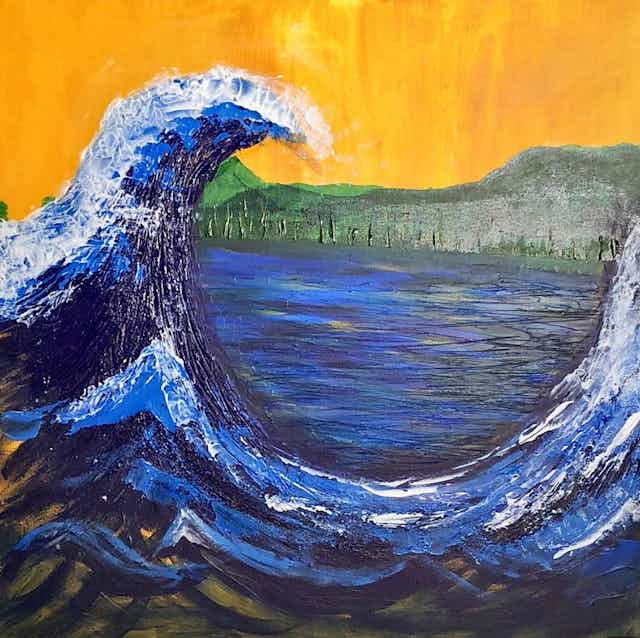Looking Into the Diverse Globe of Artistic Expression: From Surrealism to Abstract Realism
In the realm of imaginative expression, from the dreamlike landscapes of surrealism to the detailed play of light and form in abstract realism, artists have actually continuously pressed the boundaries of creative thinking and imagination. Each activity holds an one-of-a-kind lens whereby the globe is checked out and analyzed, using a look into the depths of human emotion, assumption, and assumed. As we explore the diverse world of art, we exist with a tapestry of styles, strategies, and approaches that challenge our understanding and prompt consideration. The trip via these diverse kinds of artistic expression assures to untangle a rich tapestry of visual narration and intellectual inquiry that mesmerizes the mind and mixes the spirit.
Surrealism: Letting Loose the Subconscious
Surrealism, a progressive imaginative movement of the 20th century, looked into the midsts of the subconscious, revealing a globe of dream-like images and unique associations. Spearheaded by musicians like Salvador Dali, René Magritte, and Joan Miró, Surrealism looked for to test the traditional methods of recognizing and seeing art. Via techniques such as automatism and dream analysis, Surrealist artists intended to use the unconscious mind to reveal covert facts and needs.
Among the crucial elements of Surrealism was the emphasis on the irrational and the remarkable. By combining unexpected elements in their works, Surrealist musicians intended to produce a feeling of disorientation and surprise in the visitor. This interruption of logic and factor was suggested to prompt a deeper exploration of the subconscious and the enigmas of the human subconscious.
Abstract Realistic Look: Redefining Understanding
Testing traditional creative boundaries, Abstract Realistic look redefines perception with the combination of well-known aspects with abstract types. This innovative approach to art integrates the representational precision of realistic look with the imaginative flexibility of abstraction, offering visitors an unique visual experience that motivates them to question their perception of fact.
In Abstract Realism, artists aim to record the significance of their topics while also instilling their work with a feeling of deepness and complexity via abstract elements. By blending the knowledgeable about the unfamiliar, these artists invite target markets to involve with their items on multiple degrees, motivating them to check out the subtleties of appearance, shade, and kind.

Cubism: Fragmentizing Reality
Using geometric types and fragmented viewpoints, Cubism reinvented the imaginative representation of truth in the early 20th century. Developed by Pablo Picasso and Georges Braque, Cubism looked for to test typical notions of perspective and representation. By damaging down things and numbers into geometric shapes and offering them from multiple perspectives at the same time, Cubist artists intended to catch the significance of the subject instead of its actual appearance. This technique not just deconstructed fact yet additionally emphasized the flatness of the canvas, leading the way for future abstract art motions.

Cubism can be categorized right into two main stages: Analytical Cubism, identified by monochromatic color pattern and complex, fragmented kinds; and Synthetic Cubism, which integrated collection elements and brighter shades right into the make-ups. With these unique stages, Cubism influenced not only paint yet click here to find out more likewise sculpture, style, and architecture. trump art. Its impact reverberated throughout the art globe, motivating artists to explore brand-new means of translating and representing the world around them
Expressionism: Emotions on Canvas
Exploring the midsts of human emotions through expressive and vivid brushstrokes, Expressionism arised as a profound imaginative motion in the early 20th century. Unlike previous art motions that concentrated on showing the exterior world, Expressionism delved into the internal realm of the musician's mind, intending to evoke raw feelings and provoke natural reactions from customers.
Expressionist artists, such as Edvard Munch, Egon Schiele, and Emil Nolde, turned down traditional concepts of beauty and realism in support of distorting kind and color to communicate subjective sensations. Making use of overstated brushwork, bold shades, and altered numbers aided produce a feeling of anxiousness, alienation, or enthusiasm in their works.
One of one of the most well-known instances of Expressionism is Munch's "The Scream," which captures the extreme anxiety and anguish of contemporary life with its swirling, distorted figure versus a blood-red skies. Through their psychologically charged works, Expressionist musicians sought to test traditional imaginative norms and provide a window right into the stormy depths of the human heart.
Contemporary Art: Developing Point Of Views

One of the specifying features of modern art is its consistent evolution and ability to adapt to altering social landscapes. Musicians are increasingly incorporating innovation right into their technique, obscuring the lines in between the physical and electronic worlds. This blend of tools permits innovative methods of narration and involving with target markets in an extra interactive fashion.
Moreover, contemporary art frequently functions as a platform for social commentary, addressing pressing issues such as identity, politics, and the environment. Artists are utilizing their job to prompt and spark important conversations idea, losing light on the intricacies of the globe we reside in. As point of views continue to develop, contemporary art remains a dynamic and influential pressure in forming our cultural landscape.
Conclusion
Finally, the globe of creative expression includes a vast array of movements and designs, each with its own distinct approach to sharing significance and emotion. From surrealism's expedition of the subconscious to abstract realistic look's redefining of understanding, and from cubism's fragmentation of reality to expressionism's portrayal of emotions, art remains to progress and challenge viewpoints - trump art. Contemporary art shows the ever-changing world we stay in, using new means to translate and comprehend the complexities of our fact
As we check out the multifaceted globe of art, we are presented with a tapestry of designs, methods, and viewpoints that test our understanding and provoke reflection. Its effect reverberated across the art globe, try this website inspiring musicians to explore brand-new ways of analyzing and representing the globe around them.